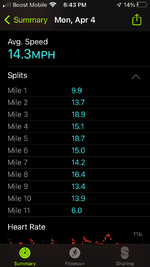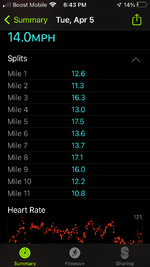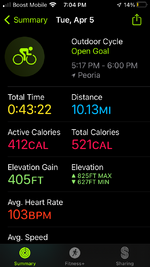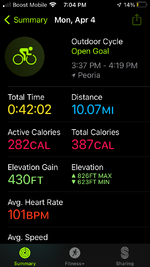rich c
Well-Known Member
Comparing my 38 pound carbon fiber 2020 BMC City Ltd Class 1 to my 52 pound aluminum 2016 Haibike Trekking Class 3. Shimano to Bosch mid drives. Images 1 and 4 are Haibike, images 2 and 3 are BMC. I used a variety of assist settings on each bike, not paying attention to any data as I was riding. I ride this route around 200 days a year, but not bored yet. It is a beautiful route along the Illinois River for a couple miles and at least 5 miles of it is on a paved Greenway multi-use path. I don't stop my iWatch at traffic lights, so not 100% riding time is recorded.





